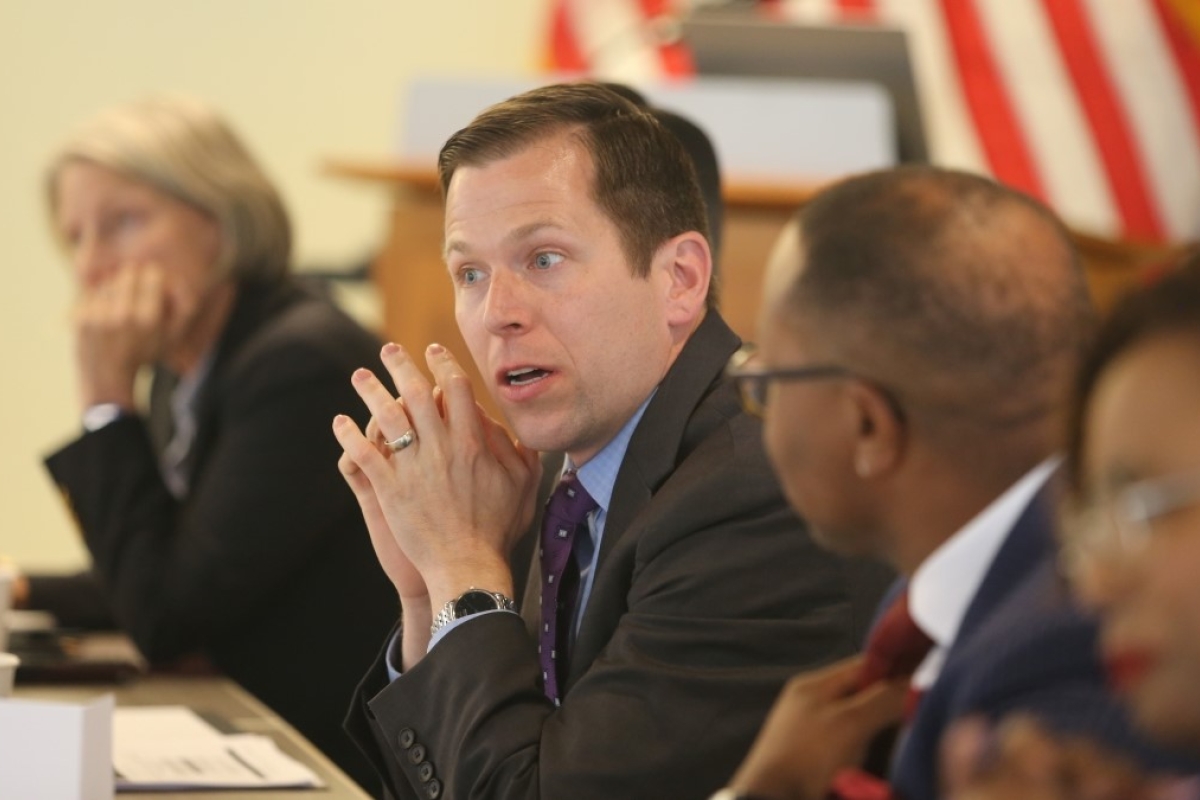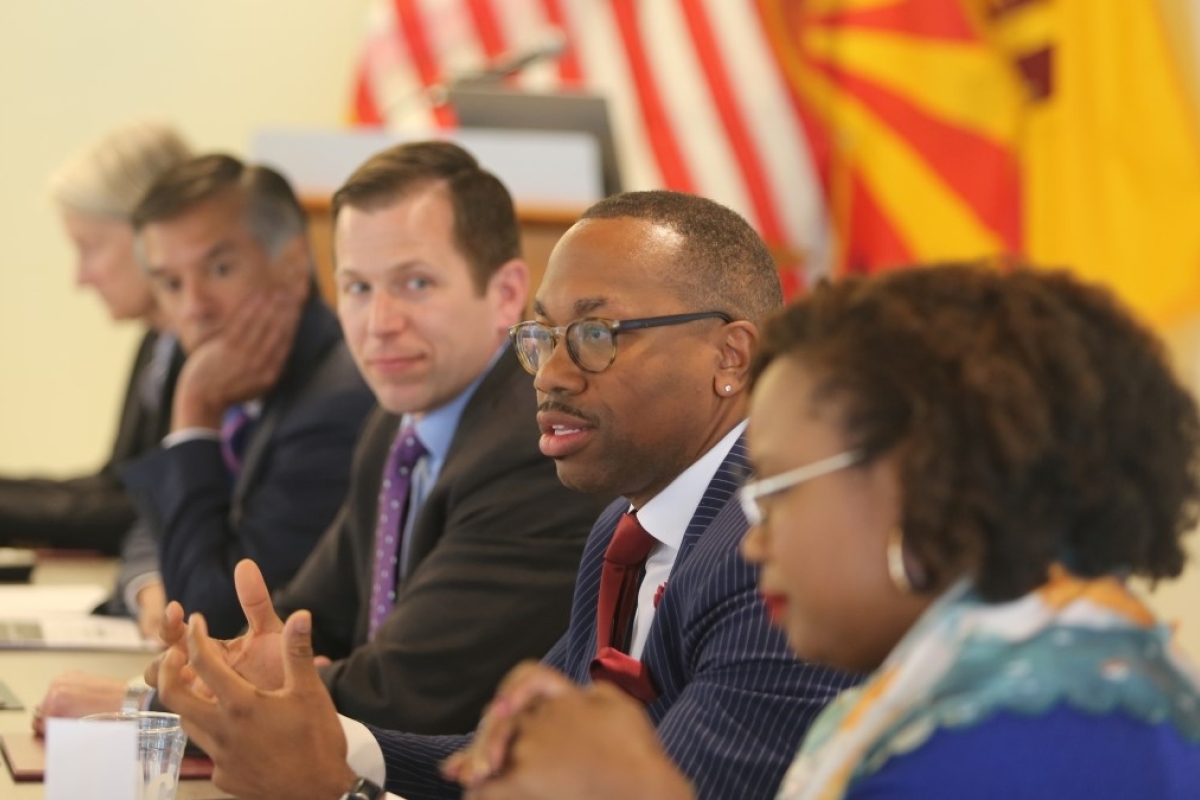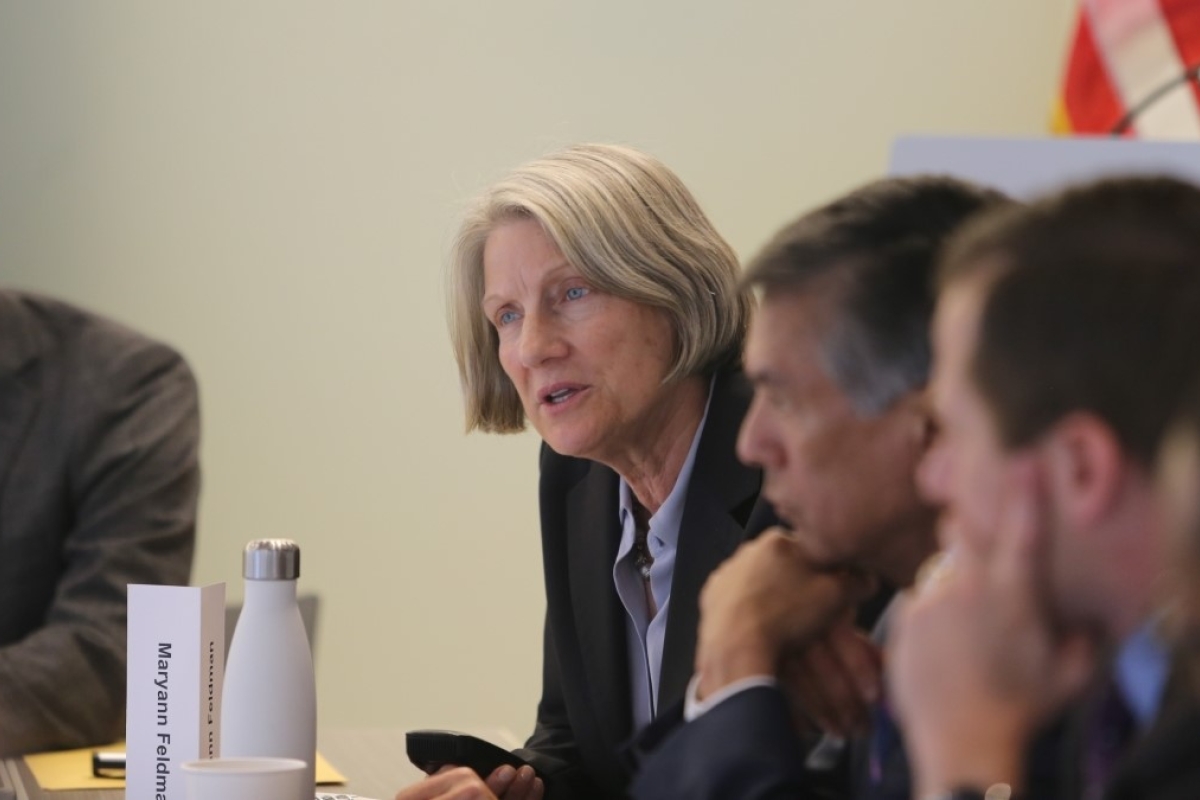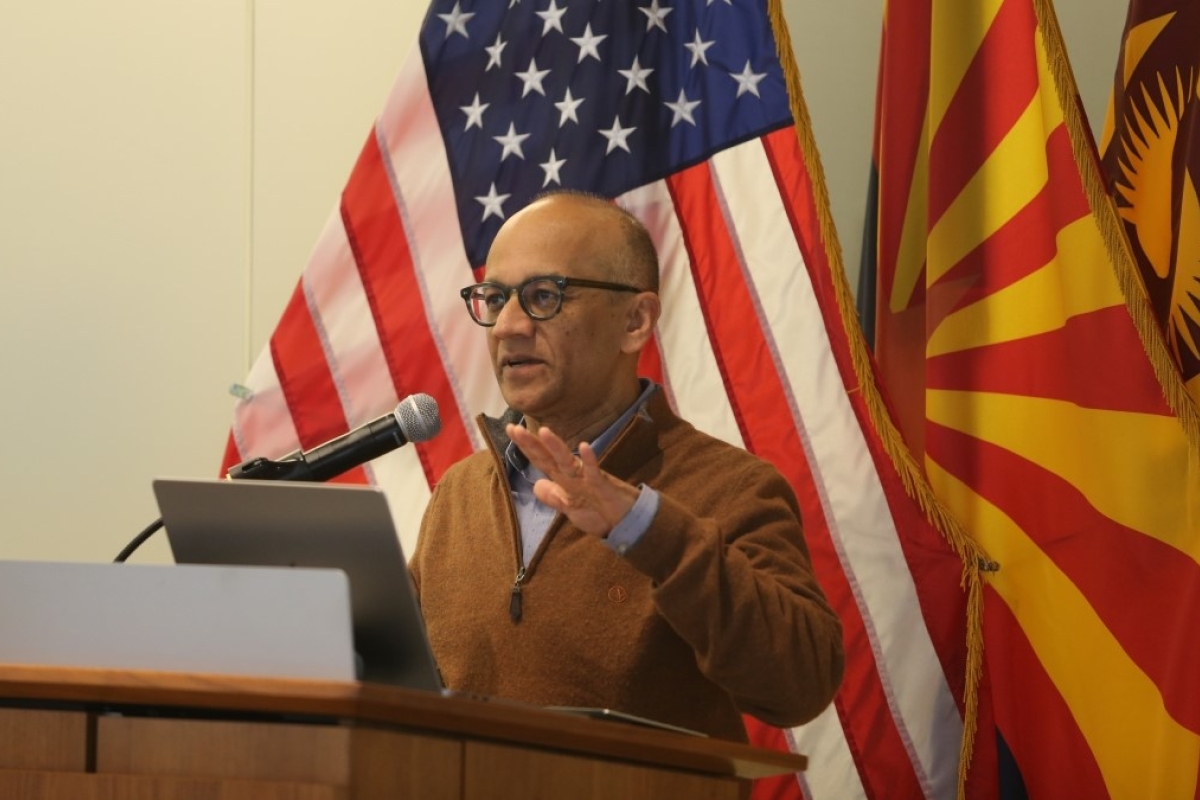Economic development, the 'Black tech ecosystem' and a tale of two economies
ASU event fosters robust conversations regarding regional innovation in both rural and urban areas
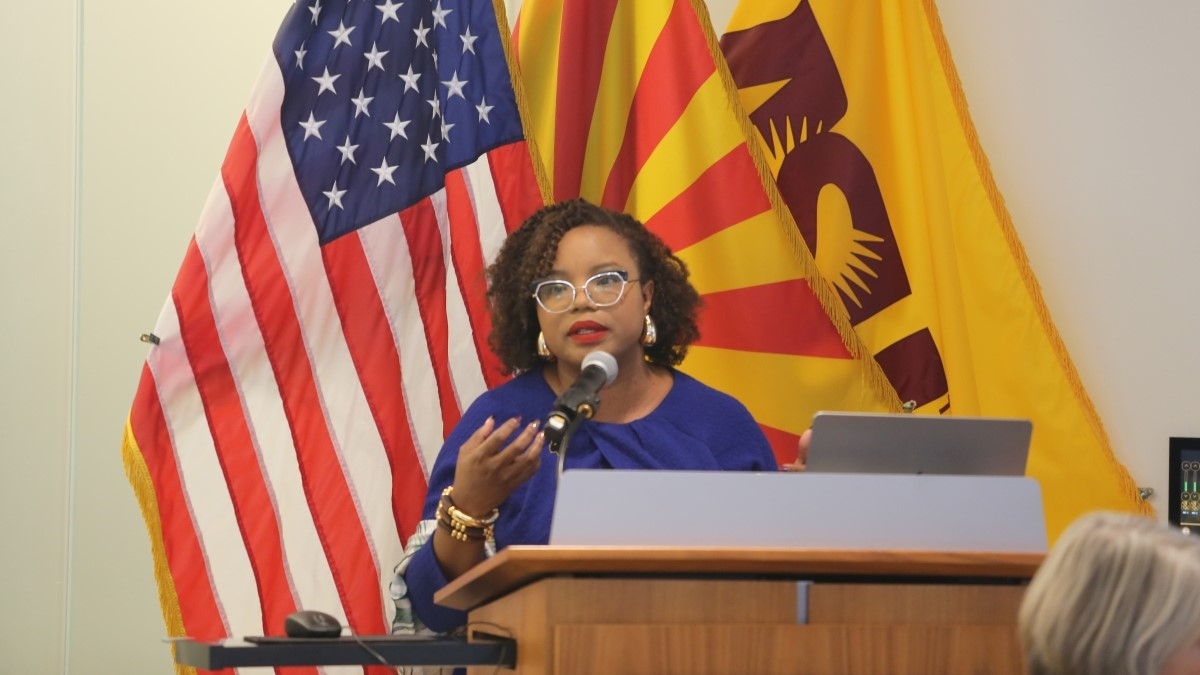
Fallon Wilson, co-founder of #BlackTechFutures Research Institute, presents on developing inclusive ecosystems to support Black entrepreneurship in technological industries. Photo courtesy Hager Sharp
When it comes to funding technology cluster initiatives, people across the country want to see how experts are analyzing long-term outcomes that benefit urban and rural communities. And policymakers are taking note, with over $80 billion of federal support to historically overlooked regions.
But without adequate measures of success in place, consumers, residents, experts, and policymakers may overlook the true effect that these decisions have on life in these areas.
Arizona State University’s Consortium for Science, Policy and Outcomes, or CSPO, gathered several experts in Washington, D.C., in early April to discuss the complexities and challenges in assessing regional innovation hubs and engines. Speakers presented a range of perspectives on the topic — from defining economic development to the “Black tech ecosystem.”
The United States is in a “new era” of federal investment in place-based innovation, said Maryann Feldman, a professor at Arizona State University and research director at the Global Center for Technology Transfer. From the Build Back Better Regional Challenge to investments in the JOBS Act to the CHIPS and Science Act and more, there’s a focus on investing in efforts to support advanced manufacturing and critical technology.
“Now, we have massive investment coming in and we have this really place-based policy evaluation challenge,” Feldman said. “Skeptics are going to say, ‘We gave you this money, what did you do with it?’ And I think we really have to have a robust discussion about how we're going to track these investments.”
Part of the challenge, as described by Feldman, is discussing how investments in rural and urban areas are evaluated.
“We, right now, have 25 metropolitan areas that produce half of the GDP in the country alone. The other 40% comes from the other 360 metropolitan areas, and 10% comes from coastal areas. These pockets that are generating a lot of GDP are not spread around the country; there are entire places that are missed," Feldman said. “We want to begin a dialogue so that we can look at this in new and creative ways, ways that are more inclusive, and that really incorporate what communities would like to see.”
Tom Guevara, the director of the Public Policy Institute at Indiana University, agreed, sharing a variety of ways to measure place-based economic development.
“This isn't about necessarily criticizing place-based development,” Guevara said. “However, we need to account for a more complete complex system of supports to increase access rights to deal with the wicked problems in marginalized and disinvested communities. This implies the need for more individualized measurement of outcomes, because the fact of the matter is, is that the current output and outcome measurements that we're using are still aggregating data.”
Measuring innovation outcomes in a way that is more inclusive and thoughtful may help show the short- and long-term effects on the residents who are directly affected by such innovation hubs.
“We don't know what happens to the people that live in those communities, where, for example, they're experiencing spillovers from tech hubs or from innovation centers — where we're purposely placing high amounts of investment into trying to transform that place," Guevara said. “We don't know because the measurements really don't account for it.”
David Kaiser, a senior director of policy, advocacy and innovation at the North Carolina Rural Center, took a regional perspective, sharing how North Carolina specifically experiences a “tale of two economies” when analyzing the geographic differences between rural and urban North Carolina. The state has the second-largest rural population in the country and the second largest number of small towns, Kaiser said, while cities like Charlotte reflect an upward trend in a robust economy.
Kaiser explained the effect that these differences have on infrastructure, like health care inequality and access to broadband.
Broadband continues to create a divide for rural communities, explained Fallon Wilson, a co-founder of #BlackTechFutures Research Institute at Stillman College and a vice president at the Multicultural Media and Telecommunications Internet Council. It’s essential for innovation and for accessing information and opportunities in today’s digital society, but still out of reach for many who live in rural areas.
“Some of the ways in which this policy was implemented cut up Black communities that were essentially located within certain urban hubs — cutting through economic thriving communities that took decades and are still having to rebuild themselves from this type of federal and state policy making,” Wilson said of the Federal-Aid Highway Act of 1956.
In her presentation, Wilson described a scenario of a young Black girl in a rural or urban high school who dreams of building her own social networking platform. If that girl goes to public school in a rural area, she may not have access to computer science coursework or teachers. And even if she can use online resources at home to fuel her dream, her lack of access to consistent broadband will likely hinder her progress.
“There's a structural condition around access, and then you get these dreams that are still great, but they could have been better if we would have thought about the many systems that are emanating themselves within a city ecosystem that obstructs the ability of Black and Latino students and families to live in an innovation economy,” Wilson said.
Wilson unveiled an index that analyzes 57 variables across 160 metrics, focusing on the concept of a Black tech ecosystem, where an “ecology of tech and non-tech Black institutions … and issues align, amplified within a larger citywide system and (by) individuals, organizations, institutions and communities” that would help to bolster economic outcomes in rural or high-poverty areas, she said.
The index, developed by the #BlackTechFutures Research Institute at Stillman College, analyzes the challenges surrounding the STEM pipeline within a community to determine each ecosystem’s health.
Wilson explained how her team used the index to score four cities: Nashville, Memphis, Houston and Birmingham. While scores for those cities were low, Wilson shared that scores can be increased by supporting critical Black digital infrastructure organizations in each city, like historically Black colleges and universities, or HBCUs, churches and other organizations.
“The more you invest in those institutions can help us change the score of your city and track it over time,” she said. “What that does is it allows more of the city to think that they're making movement — which they are — but it also gives capacity and growth and scales to institutions who have been doing this work unseen by us for decades.”
As a Black woman working in technology hubs, Wilson said her experience has given her insight on the structural conditions and policies at the local, state, and national levels that continue to restrict access and ability.
“I saw how the white power structure of ... Nashville or Chattanooga or Memphis kept people from being able to fully give and to create these proposals that were submitted,” Wilson said. “It has always been policy, the rule-making, this process here, that keeps Black and brown communities from having the type of innovating ecosystems or opportunities that other communities have.”
Mahmud Farooque, a clinical professor in ASU’s School for the Future of Innovation in Society, agreed, pointing to gaps in educating the public and policymakers about what’s needed to foster regional innovation.
“We know that what we actually need is to focus on education — not just education of the public about the tech — but also educating the decision-maker about the public,” Farooque said. “So, it's civic literacy for also data scientists, engineers and developers."
Following the presentations, a member of the audience asked about overlooked communities, like his hometown of Schenectady, New York. Once a manufacturing powerhouse, Schenectady is now “hollowed out.” Wilson explained how the index could inform paths to improvement for the community by identifying the cultural capital and other strengths it can build on.
Guevara agreed that a holistic evaluation can help build longer-term solutions.
“Economic development isn't all just about transactions. It's actually about the development and human capital, human spirit, human mindset, as much it is about the physical things, even just the money itself,” Guevara said. “We also have to get people away from the notion of economic transactions and short-term solutions. It actually takes something more than that.”
More Local, national and global affairs

Conference draws professionals from across the US to collaborate on data research
By Lillian Finley Researchers, professors, students and nonprofit professionals gathered at Arizona State University’s Downtown Phoenix campus April 19–20 for the 2024 West Coast Nonprofit Data…
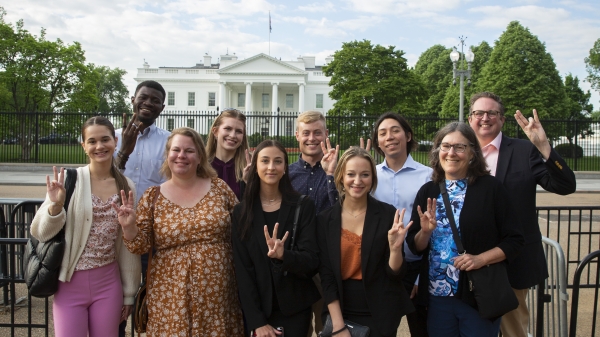
Students travel to DC to present proposals on climate change
Ten students from Arizona State University’s Humanities Lab spring course — Diplomacy Lab: Brazil — traveled to Washington, D.C., with their two professors to present research on climate change…
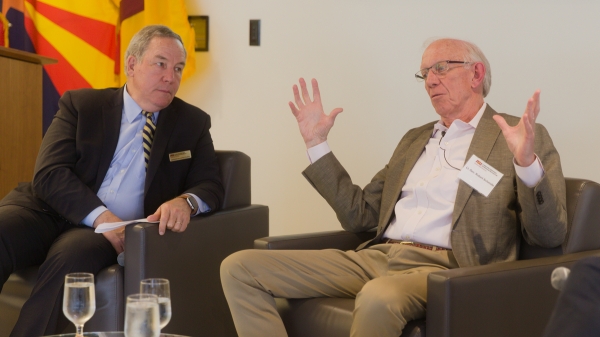
ASU lab hosts discussion on cyber defense as a deterrent
The Leadership, Democracy, and National Security Lab invited retired Lieutenant General Robert Schmidle Jr., the former deputy commander of U.S. Cyber Command, to speak about the strategic imperative…
